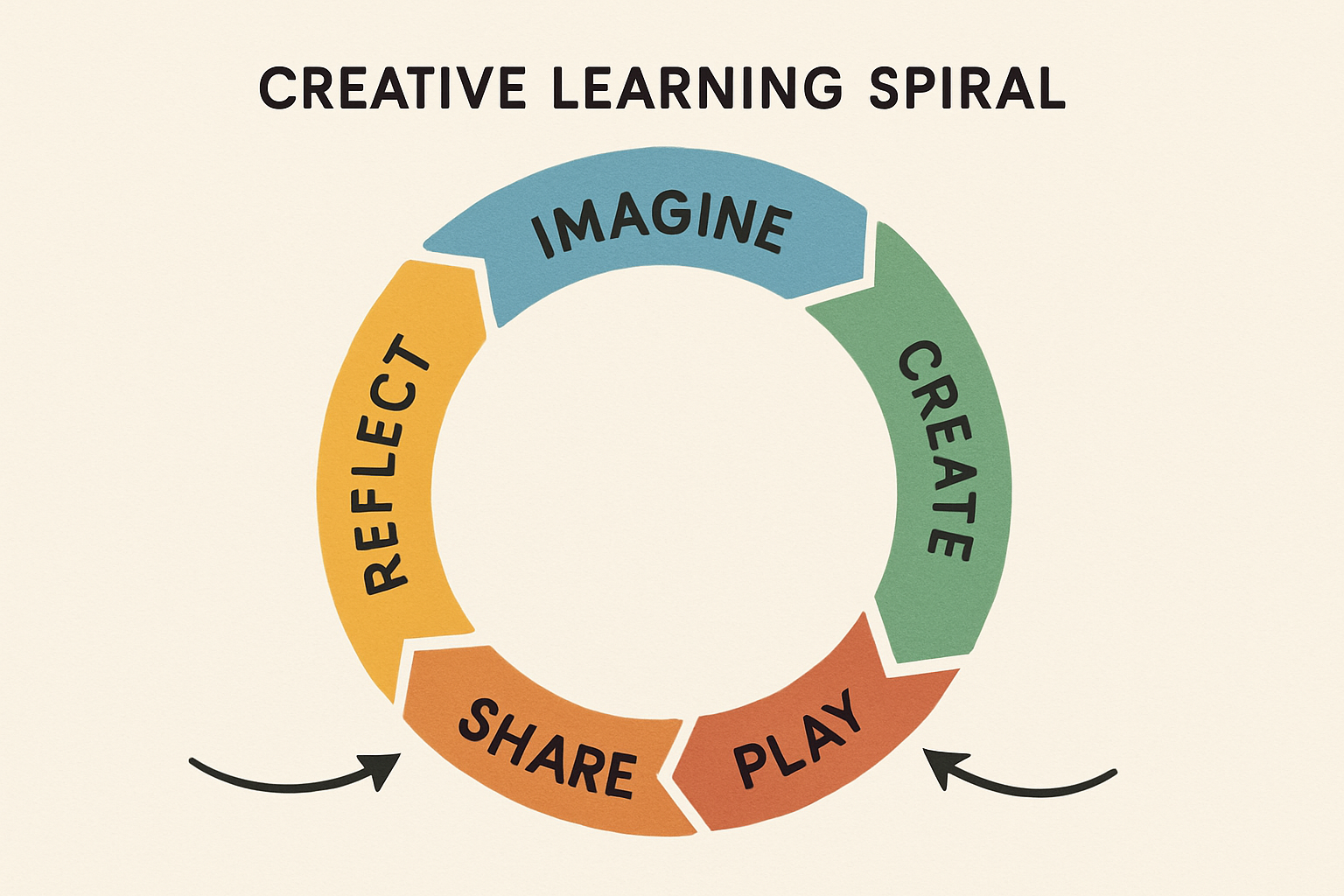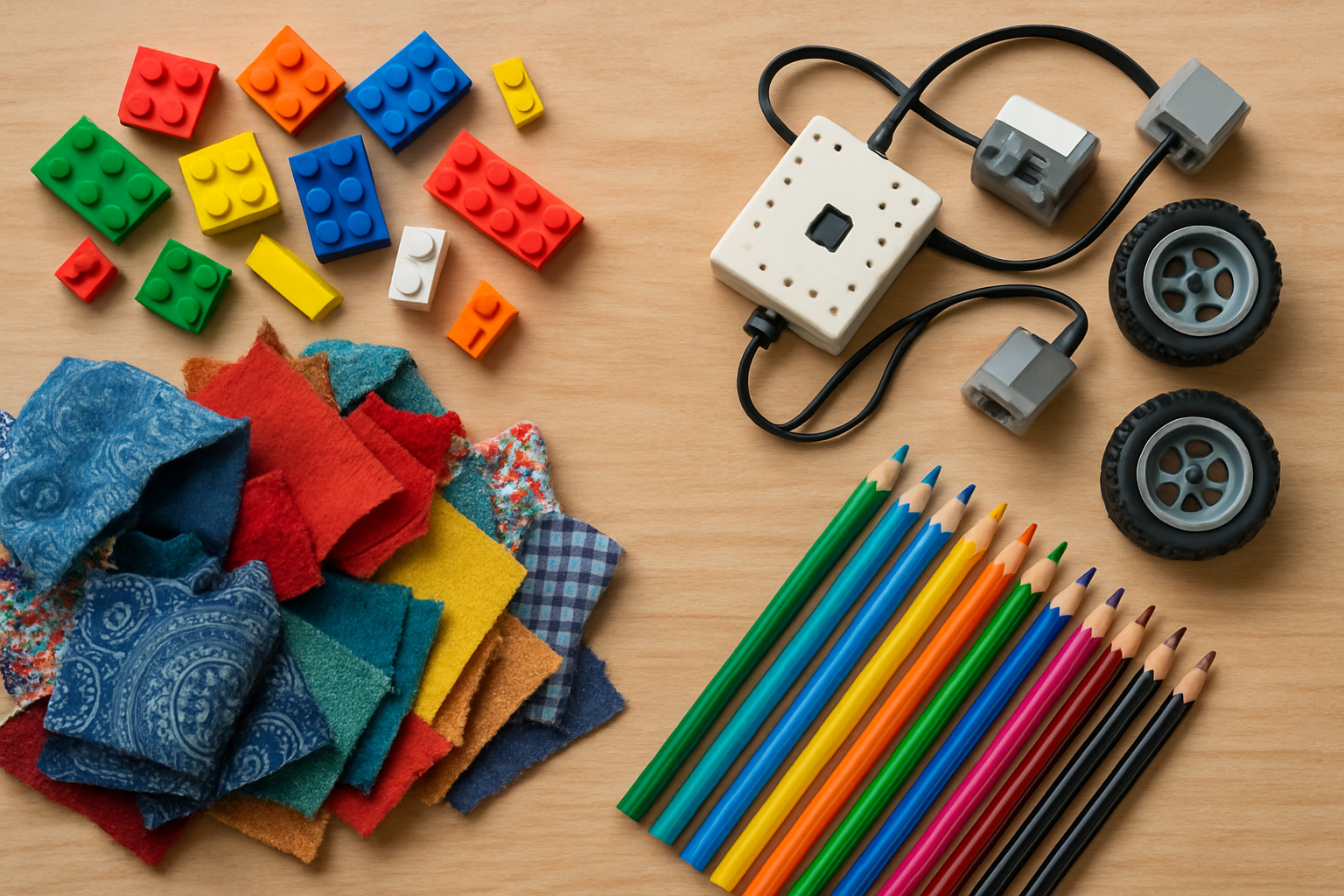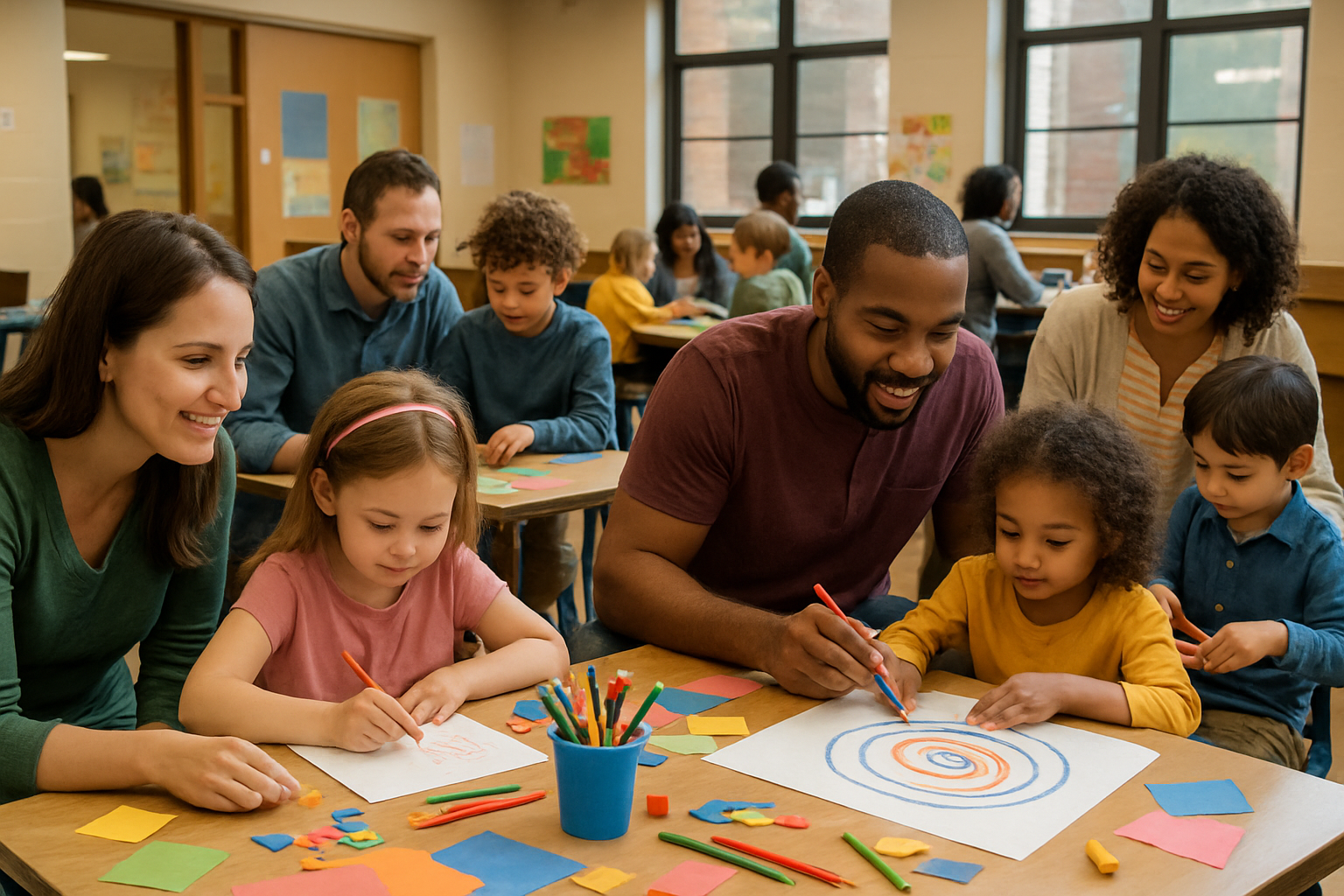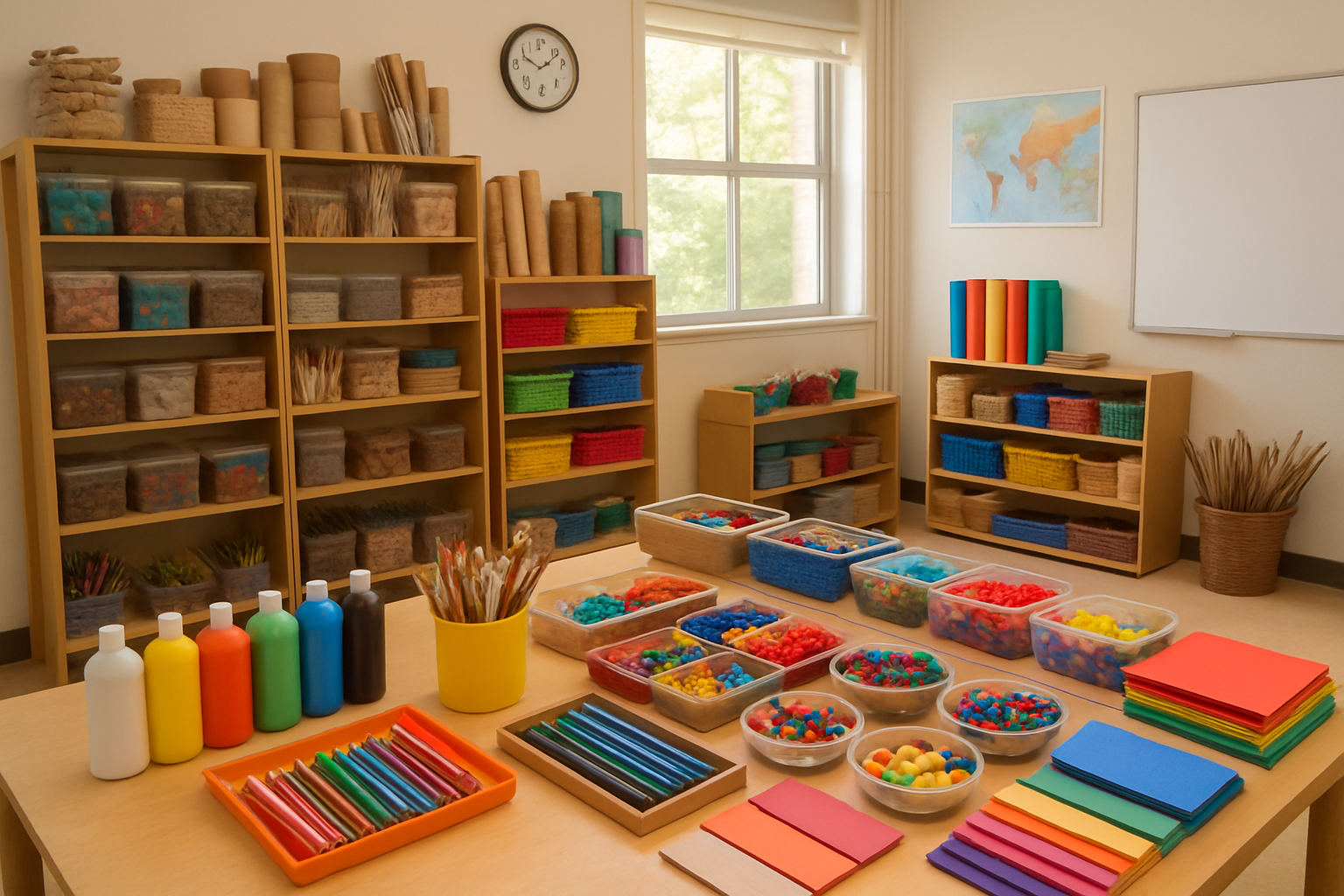Creativity fuels innovation and learning.
But what exactly is the creative learning spiral?
Here’s your comprehensive guide and cheatsheet for understanding and applying the creative learning spiral in education and beyond.
Some are curious about how imagination sparks new ideas.
Some are excited to explore multiple ways of creating without limits.
Some want practical ways to embrace play as a learning tool.
Some wonder how sharing ideas deepens understanding and collaboration.
Some recognize the power of reflecting honestly on their creative journey.
Some wish to know how this spiral repeats to ignite continuous growth.
Let’s dive right in.
What Is the Creative Learning Spiral and Why Does It Matter?
The creative learning spiral is a dynamic process involving five core stages: imagine, create, play, share, and reflect. It’s not a one-time method but an endless cycle that nurtures creativity deeply.
At its heart, the spiral creates a supportive environment where creative potential takes root and grows into meaningful projects and ideas. Unlike mythic notions that creativity blooms best with zero interference, research shows structured guidance blended with freedom is key to real creative development in children and learners of all ages (Resnick, 2024).
Imagine needing a spark to start a fire. The creative learning spiral is that spark, lighting up each phase with strategies and encouragement. It balances showing examples to inspire and encouraging play to experiment. Attention given to reflection and sharing fuels the flame to burn brighter and longer.
Use this spiral framework not only in classrooms but at home, workplaces, and personal growth journeys to transform the way creativity unfolds. It empowers learners to think authentically and work innovatively through a proven approach (MIT Media Lab, 2025).

How Can I Use Imagination to Start the Creative Learning Spiral?
Imagine often feels like a mental act, but the spiral teaches that tactile engagement enhances ideas. Starting with diverse examples sparks children’s and learners’ imagination effectively. For instance, Scratch workshops begin by showcasing finished projects to illustrate possibilities and starter projects to lower the barrier to entry. Diverse examples connect with varied interests and motivate changes personalized by the learner’s style (Resnick, 2024).
Don’t fear imitation at the start. It’s a healthy step towards originality. Encourage modifying and inserting personal touches. Imagine a child copying a drawing but adding their favorite color or a quirky character. That’s the beginning of ownership.
Messing around with materials like LEGO, craft supplies, or digital tools can trigger unexpected creative ideas. Try hands-on activities, like passing a LEGO build around to add more pieces collectively. This playful collaboration is a gateway to innovative projects. In fact, physical tinkering enhances neural pathways tied to creative thinking (MIT Media Lab, 2025).
Expert Tip: Use diverse role models and creative works to fuel imagination without pressure. Create a gallery of inspiring projects accessible anytime to jumpstart the spiral.
What Materials Are Best for the Create Phase in the Creative Learning Spiral?
Materials impact creativity profoundly. The more diverse the tools and supplies available, the richer the creative output. Provide an array spanning traditional to modern: pens, markers, popsicle sticks, felt, fabric, robotics kits, and 3D printers.
Sometimes, the simplest materials yield profound results – like dolls made from nylons, newspapers, and bird seed, illustrating that technology isn’t always necessary to inspire originality (Resnick, 2024).
Children and learners gravitate toward varied making methods. Encourage everyone to explore different crafts: building, coding, writing, cooking, or game design – all embody creative design processes. Engaging in multiple disciplines nurtures adaptable creators equipped for complex problem solving Mastering the Arts and Crafts of Problem Solving.

How Does Playing Boost Creativity in This Spiral?
Play emphasizes process over a polished product. Many fear messy or ‘failed’ experiments, but the spiral values these as rich learning moments. Sharing intermediate project stages cultivates reflective thinking and strategic adaptation.
Time is crucial. Rushing creativity into tight segments undermines risk-taking. Lengthened project periods—double classes, days, or dedicated weeks—enable deeper exploration. After-school and community programs are valuable extensions for this expansive play/creation time (Resnick, 2024).
Imagine a student working on coding a game in Scratch. Instead of finishing in one session, they experiment with different characters and stories over weeks, learning to debug and enhance their design through sustained play and tinkering.
Quick Question: When was the last time you gave yourself space to play fully in a learning process?
Why Are Sharing and Collaboration Vital in the Creative Learning Spiral?
Collaboration enriches creativity by offering fresh perspectives and collective energy. Facilitators play matchmaker roles by connecting learners with common or complementary interests, catalyzing unexpected creative combos.
In online spaces like the Scratch community, organized events such as month-long Collab Camps teach not just collaboration mechanics but also social skills tied to creativity (Resnick, 2024). Physically, staff and mentors at community centers facilitate partnerships that inspire art-meets-robotics projects and similar hybrid innovations.
True collaborations happen when adults resist taking over or stepping away completely. The sweet spot lies in co-creating with children or peers. This fosters respect, relationship building, and mutual skill development. For example, families working together in creative learning labs deepen bonds while growing skills (MIT Media Lab, 2025).

How Can Reflection Make My Creative Learning Spiral Stronger?
Reflection turns experience into wisdom. Asking authentic, open-ended questions facilitates insight and recognition of creative strategies and challenges. Start simply with: “How did you come up with this idea?” or “What surprised you most?”.
Reflection bridges the gap between doing and understanding. Adults modeling their own thinking patterns demystify the difficulty of creative work, normalize confusion, and share effective problem-solving methods. This transparency invites learners to self-reflect more openly and deeply (Resnick, 2024).
Imagine a student struggling with a robotics project. Instead of immediately fixing the code, the mentor asks, “What did you want it to do?” This prompts the learner to analyze their own approach and learn from errors. The understanding gained transfers to future challenges.
How Do I Continue and Expand My Creative Learning Spiral Over Time?
The spiral is not a single loop but a continuous cycle. Each round of imagining, creating, playing, sharing, and reflecting seeds new ideas and possibilities. Creative growth accelerates with each iteration.
Supporting repeated cycles means building routines that welcome curiosity and experimentation. Encourage learners to revisit their projects with new goals or materials, reinvoking the initial spark with increased insight.
Embedding this spiral mindset in daily learning environments transforms creativity from a rare event into a natural flow. Continual iteration builds confidence and a resilient creative identity (MIT Media Lab, 2025).
Embracing the creative learning spiral also means adapting to new technologies and methods. For example, introducing virtual collaboration tools or advanced maker equipment can amplify creative capacities while blending tradition with innovation Mastering Smarts and Crafts.
Engagement Reminder: What creative cycle can you start TODAY that will propel your learning forward?
Creating an Environment That Nurtures the Creative Learning Spiral
Physical and psychological environments profoundly impact the spiral’s effectiveness. Provide a rich variety of materials easily accessible to learners. Spaces should invite play, mess, and collaboration.
Flexible seating options, communal work tables, and vibrant displays of learner work stimulate engagement. Emphasize safety for experimentation – where failures are celebrated as stepping stones.
Equally critical is fostering an atmosphere of trust and curiosity. Adults should balance structure and freedom, stepping in and out to guide without restricting. Listening deeply to learners’ ideas validates their creative voices.
As an example, community spaces like Computer Clubhouses use mentoring to maintain this balance, supporting independent exploration with timely scaffolding (Resnick, 2024).
Tips for Supporting the Creative Learning Spiral at Home and School
- Show inspirational examples: Start activities by sharing diverse projects to spark ideas while encouraging personalization.
- Encourage hands-on messing around: Use playful material tinkering to generate and refine ideas.
- Provide a wide variety of materials: Combine traditional and modern tools to expand creative expression.
- Embrace diverse making types: Support learners in exploring multiple creative forms to deepen design understanding.
- Highlight process over product: Celebrate experimentation, iteration, and intermediate stages.
- Allow ample project time: Schedule long blocks for extended exploration and risk-taking.
- Promote sharing and collaboration: Connect learners with partners for joint creation and exchange.
- Act as collaborators: Adults should partner genuinely, modeling co-creation.
- Ask authentic questions: Support reflection with sincere, open-ended inquiries.
- Share your own reflections: Model thinking processes to inspire deeper learner self-reflection.
These tips cut across home and school settings because at the core, creativity thrives in supportive, engaging communities (Resnick, 2024).

Can Technology Enhance the Creative Learning Spiral?
Absolutely. Technology, used thoughtfully, adds powerful dimensions to the spiral. Coding platforms like Scratch enable dynamic creation that integrates sound, movement, and interactivity. Robotics kits and 3D printers extend hands-on making into new realms.
However, technology shouldn’t overshadow traditional creative activities. Balance digital and physical making to nurture diverse skills and cognitive pathways (MIT Media Lab, 2025).
Virtual collaboration tools widen sharing beyond immediate physical spaces, connecting talents worldwide. Online communities and project showcases build feedback and motivation loops critical to the spiral’s sharing phase.
Bringing technology into a creative learning spiral means blending it as a tool, not a replacement, for play and reflection. This synergy is at the heart of modern maker education Mastering Smarts and Crafts.
What Are Common Challenges in Using the Creative Learning Spiral?
Despite its promise, implementing the spiral faces hurdles. Time constraints in traditional schooling often hinder extended project work essential for deep creative play.
Adults may struggle to find the sweet spot between guiding and stepping back, either micromanaging or neglecting creative coaching.
Another challenge is balancing inspiration and originality. Excessive dependence on examples can lead to copying rather than authentic creation, limiting growth.
Technological inequities can also restrict access to diverse digital making tools, reducing opportunity for all learners.
Addressing these requires systemic support: scheduling flexibility, mentoring training, resource equity, and cultivating a culture that values creative risk and reflection.
Reflective Question: How might you adjust your learning or teaching environment to overcome these barriers?
How Do I Assess Progress in the Creative Learning Spiral?
Assessment in the spiral focuses less on final products and more on evidence of learning processes, risk-taking, problem solving, and reflective growth.
Use portfolios documenting sketches, prototypes, iterations, and reflections. Ask learners to articulate their creative decisions and challenges. Peer and self-assessment are valuable complements to teacher feedback.
Look for evidence of sustained engagement through multiple spiral iterations. Noticing shifts in approach, expanded skills, and deeper reflection signals meaningful progress (Resnick, 2024).
What Is the Role of Failure in the Creative Learning Spiral?
Failure is not just expected but embraced as a vital tour guide on the creativity journey. Each failed experiment opens new questions and directions.
Honoring failures as data reduces fear and encourages risk-taking. For example, a child’s first attempt at coding may not work, but detailed reflection uncovers insights on debugging and coding logic.
Failure reframes creativity from a talent to a growth process available to all willing to learn deeply (Resnick, 2024).
What Are Effective Strategies for Fostering Reflective Practices?
Avoid generic questions. Use authentic, curious inquiries that tap motivation and surprises: “What inspired you?” “What changes did you try and what happened?”.
Journaling, sketch notes, video diaries, or peer discussions enrich reflection formats. Modeling adult reflective narratives invites learner openness.
Reflection circles and sharing sessions transform individual insights into community learning.
How Does the Creative Learning Spiral Adapt to Adults and Professional Contexts?
The spiral’s phases apply broadly. Professionals in UX design, engineering, or marketing use envisioning, prototyping, testing, feedback sharing, and retrospective reflections akin to the spiral.
Adopting playful experimentation and collaborative sharing combats creative burnout and fosters innovation. Leaders encouraging spiraled learning create vibrant cultures of continuous improvement.
Check out resources like Mastering the Arts and Crafts of Problem Solving for blending creative strategies into professional workflows.
What Should I Keep in Mind When Using the Creative Learning Spiral?
- Creativity flourishes in iterative cycles, not one-shot events.
- Balance inspiration with individual expression.
- Provide diverse materials and multiple ways to create.
- Prioritize time and space for extended play and exploration.
- Facilitate authentic collaboration and sharing.
- Encourage ongoing, honest reflection.
- Normalize failure as learning.
- Model your own creative thinking processes.
Frequently Asked Questions About the Creative Learning Spiral
How long does one cycle of the creative learning spiral take?
There is no strict timeframe. Some projects cycle through stages in hours, others over weeks or months. The key is allowing sufficient time for genuine play and reflection.
Is the creative learning spiral only for children?
No. Though often applied in education, its principles benefit learners and professionals at all ages, fostering ongoing adaptive creativity.
How do I encourage children to share without pressure?
Offer safe opportunities like small group sharing, positive feedback, and celebrate all voices. Be patient and model sharing as enjoyable and meaningful.
Can the creative learning spiral improve academic performance?
Yes. It enhances engagement, critical thinking, problem solving, and communication skills, foundational for academic success (Verified with sources as of 2025-08-29).
Should I use technology or traditional materials?
Use both. Technology expands possibilities, while traditional materials build foundational skills and sensibilities. Blending approaches is most beneficial (MIT Media Lab, 2025).
What’s Your Next Step?
Tell us in the comments: How will you apply this to your creative learning journey? For personalized advice, contact us!
Leave a Reply